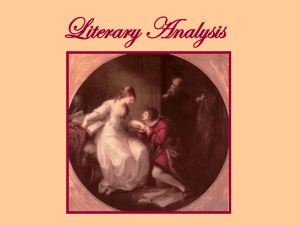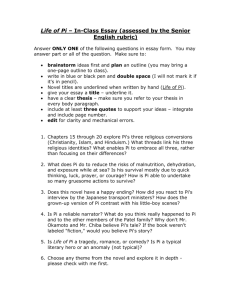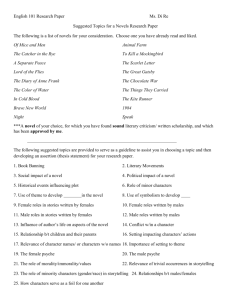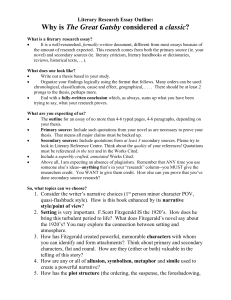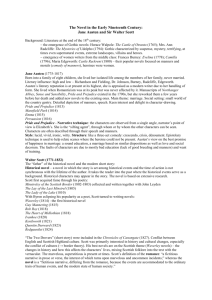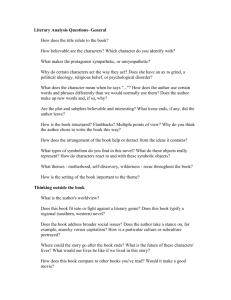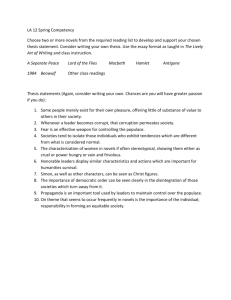Literary Thesis Statement Guide
advertisement
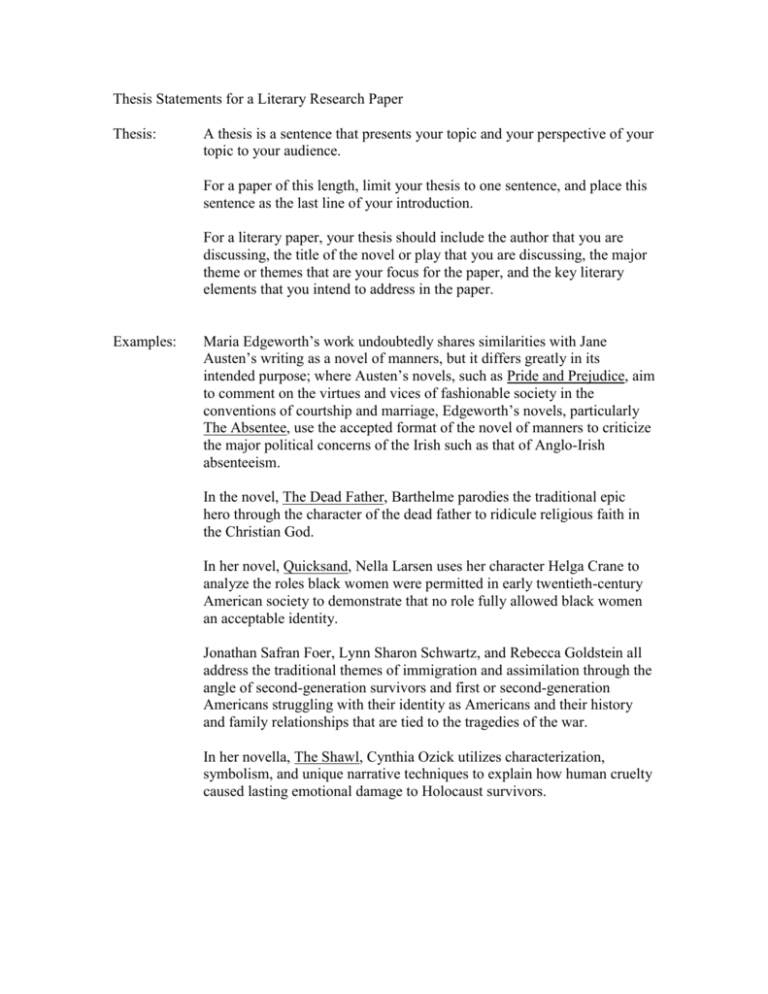
Thesis Statements for a Literary Research Paper Thesis: A thesis is a sentence that presents your topic and your perspective of your topic to your audience. For a paper of this length, limit your thesis to one sentence, and place this sentence as the last line of your introduction. For a literary paper, your thesis should include the author that you are discussing, the title of the novel or play that you are discussing, the major theme or themes that are your focus for the paper, and the key literary elements that you intend to address in the paper. Examples: Maria Edgeworth’s work undoubtedly shares similarities with Jane Austen’s writing as a novel of manners, but it differs greatly in its intended purpose; where Austen’s novels, such as Pride and Prejudice, aim to comment on the virtues and vices of fashionable society in the conventions of courtship and marriage, Edgeworth’s novels, particularly The Absentee, use the accepted format of the novel of manners to criticize the major political concerns of the Irish such as that of Anglo-Irish absenteeism. In the novel, The Dead Father, Barthelme parodies the traditional epic hero through the character of the dead father to ridicule religious faith in the Christian God. In her novel, Quicksand, Nella Larsen uses her character Helga Crane to analyze the roles black women were permitted in early twentieth-century American society to demonstrate that no role fully allowed black women an acceptable identity. Jonathan Safran Foer, Lynn Sharon Schwartz, and Rebecca Goldstein all address the traditional themes of immigration and assimilation through the angle of second-generation survivors and first or second-generation Americans struggling with their identity as Americans and their history and family relationships that are tied to the tragedies of the war. In her novella, The Shawl, Cynthia Ozick utilizes characterization, symbolism, and unique narrative techniques to explain how human cruelty caused lasting emotional damage to Holocaust survivors.
